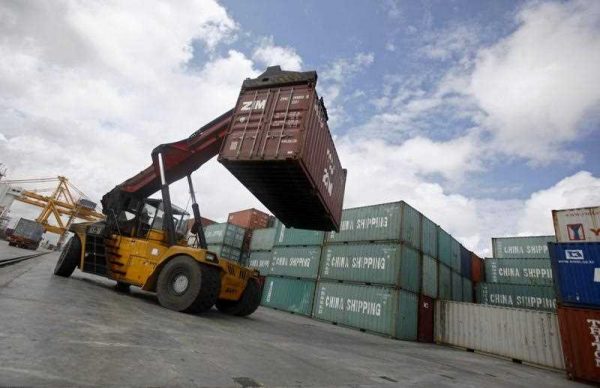The most important driver for growth has been offshore natural gas production for export coming on stream. Unlocking its future growth potential will critically depend on how the country broadens its industrial base and develops value-added linkages to regional and global production networks — which requires further acceleration of broad-based reforms and economic transformation.
Many developing countries in Asia have relied on outward-oriented growth strategies by focusing on trade and FDI to boost demand for competitive products, allowing for cheaper and greater varieties of production inputs, integrating with global and regional production networks, and fostering technology transfer and productivity growth. With the lifting of sanctions and outward-oriented reform, a great opportunity awaits Myanmar. It needs to seize the opportunity to secure access to regional and global markets, technology and expertise in finance and management.
ASEAN can provide an important entry point for Myanmar’s integration into the regional and global production networks, as well as global value chains. The benefits from a single market of ASEAN economies by 2015 under the ASEAN Economic Community (AEC) could be immense, in terms of access to greater regional markets, attracting regional FDI, and benefiting from skilled labour from other ASEAN countries. Myanmar is committed to implementing all undertakings by 2020 and most commitments under the AEC Blueprint are expected to be met by 2018. However, the underdeveloped financial system, inadequate infrastructure, weak institutions, and lack of awareness of AEC programs and implementation remain major obstacles that can only be overcome over the medium term.
Tapping into the potential benefits of regional integration will depend largely on how the country addresses its poor infrastructure and connectivity, strengthens its industrial and commercial base and enhances its institutional and human resource capacity.
Myanmar is ranked low in the overall logistics performance index by the latest World Bank Logistics Performance Survey— 145th out of 160 countries — and quality of infrastructure ranks 137th. Considerable infrastructure gaps exist. A new ADB study estimates the country needs to invest as much as US$80 billion to address the major infrastructure gaps by 2030. Immediate policy attention and investment are called for especially in the areas of improving transport networks; provision of adequate, reliable, and affordable energy; and building basic information and communication technology infrastructure.
Attention to transport infrastructure and transit corridors is particularly important for the success of economic integration with regional and global communities. High transport costs undermine the potential gains from trade liberalisation and can negate the price effects of reductions in tariffs and non-trade barriers. The missing links and bottlenecks in transportation infrastructure are serious problems, preventing the country from effectively integrating itself with the regional economy and exploiting its advantage as a natural bridge between South and Southeast Asia. Here, the first step would be for Myanmar to play its part in improving physical connectivity in ASEAN —to reduce trade costs and enhance trade competitiveness, as well as to improve mobility.
Another related issue is trade facilitation. Steps to enhance trade facilitation include streamlining document requirements for imports and exports, reducing the number of border agencies, removing hidden trade barriers including non-tariff barriers and behind-the-border practices, and enhancing governance and transparency to avoid corruption and unofficial payments.
There is great scope for Myanmar to introduce and implement policies that can unleash the full potential of industrialisation. The first step is to promote trade-oriented labour intensive manufacturing industries, through leveraging special economic zones and attracting FDI in areas of strategic importance. In particular, the government needs to coordinate and calibrate its policies for business incentives, clear property rights and harmonious labour relations in order to draw more FDI into key sectors that can spearhead long-term growth.
Much progress has been made to improve the investment climate by removing unnecessary hurdles to business and trade, providing legal foundation for foreign investment, improving essential public services, and addressing governance and corruption issues. But much more needs to be done. Building on the earlier reform momentum, the second wave of reforms should focus on strengthening private sector capacity in order to unleash the potential of trade and FDI. Such reforms should include further improving the regulatory environment; investing in physical and social infrastructure; building human capital, with particular attention to upgrading the skills of the young; and strengthening and developing the banking sector and financial markets.
Finally, investment in human capital development is crucial to allow the country to attract and retain more of the benefits from FDI. Trade and FDI liberalisation will help improve the utilisation of factor endowments and productivity, leading to high growth and sustained poverty reduction. But it is human resource capacity that will ultimately enable the country to unleash the potential of trade and FDI and their attendant benefits. The World Economic Forum’s Global Competitiveness Survey reveals Myanmar’s poor ranking on business environment and attributes this to problems in access to financing, policy instability, corruption and an inadequately educated workforce.
Past neglect and underinvestment in education has left a huge void in Myanmar’s skilled workforce, and increasing the skills of its labour force is a huge task. Along with the short-term measures to support skills upgrading and vocational training, a comprehensive reform of the education sector at all levels is needed to support higher medium- and long-term growth.
Cyn-Young Park is Assistant Chief Economist and Director of the Economic Analysis and Operations Support Division in the Economics Research Department of the Asian Development Bank.

